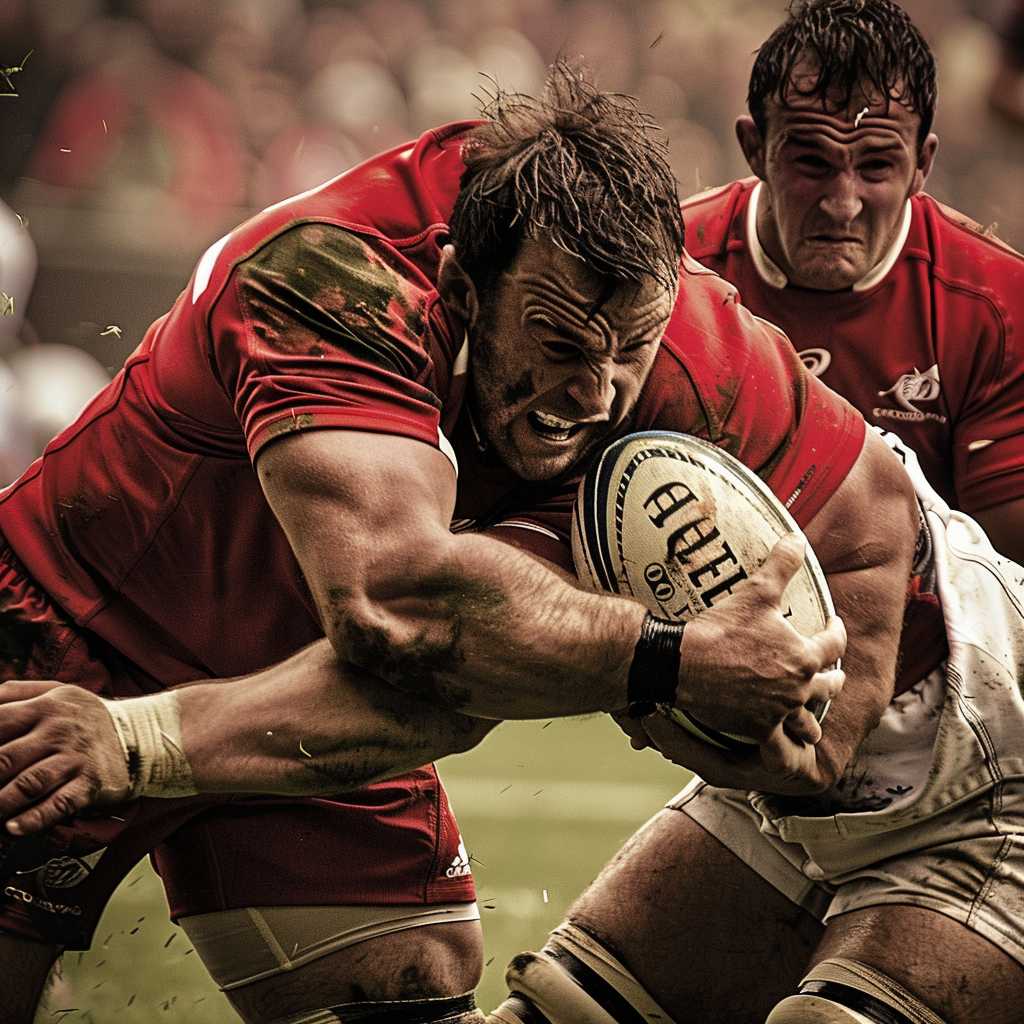The Controversies and Implications of the Hip-Drop Tackle in Rugby
The hip-drop tackle, a maneuver executed during rugby matches, has become a contentious issue within the sport. This article examines the technique from various perspectives, melding historical context, player safety concerns, the rationale behind its use, and the responses from both governing bodies and the wider rugby community.
The Hip-Drop Tackle Explained
The hip-drop tackle is a defensive move seen in rugby where a player aims to take down an opponent by dropping their hips and falling towards the ball carrier’s lower legs during a tackle. This dropping action can sometimes result in a ‘crocodile roll’ effect, potentially causing significant knee and ankle injuries to the ball carrier because of the unnatural twisting forces applied to their lower limbs.
Historical Usage and Evolution
Rugby union and rugby league have a long and storied history, with tackles evolving as players have become bigger, stronger, and faster. While standard tackles target the upper body or waist of the ball carrier to halt momentum, the hip-drop tackle focuses on the lower body part. Its rise within professional rugby has been noted in recent years, coinciding with increased scrutiny due to injury concerns.
Player Safety At The Forefront
Central to the critique of the hip-drop tackle is concern for player welfare. Severe injuries resulting from this type of tackle have stirred debate over whether its use should be limited or outright banned.
Reactions From Governing Bodies
In response to safety worries, rugby governing bodies have explored various avenues to regulate or discourage the hip-drop tackle. Referees are often instructed to monitor such tackles closely. Some leagues have introduced harsher penalties for tackles deemed dangerous, which sometimes includes forms of hip drops.
The Perspective of Coaches and Players
Coaches and players have often brought differing perspectives to the issue. Strategic views maintain that tackling techniques, like the hip-drop when used carefully, are a legitimate part of rugby’s tactical arsenals. Others see any technique that objectively raises injury risks as contrary to sportsmanship and player development priorities.
Ethical Considerations And The Future Of Tackling Techniques
Ethics in sports, including fair competition and respect for opponent well-being, must intersect with evolving play tactics and physical developments. Such considerations guide federations and those involved in shaping the future of tackling techniques.
International Views and Consensus-Building
Internationally, parity in rules regarding tackling techniques is crucial as teams from different regions and leagues come together for world cups and other global events. Consistency ensures all players understand expectations offensively and defensively.
Balancing Entertainment Value with Player Health
Rugby, like many sports, works within the tension of being entertaining while promoting player wellness. While some thrill at powerful takedowns, there’s an increased acknowledgment that players’ careers and post-career quality should not be sacrificed purely for audience gratification.
The Technical Analysis of a Safer Game
Technical adaptation in tackling strategies is examined. Specialists delve into how coaching can lower injury rates without compromising game integrity – suggesting that meticulous breakdowns of movements could work towards phasing out risky maneuvers like the hip-drop tackle.
Notes
Conclusion: The Need For A Balanced Approach The ongoing debate around the hip-drop tackle represents larger discussions about player safety vs. competitive instincts; between historical gameplay methods and evolving sports ethics. Resolving this tension will require collaboration between athletes, coaches, governing bodies, and medical professionals to find solutions that benefit all stakeholders in rugby’s beloved but high-risk theatre of competition.
*Image Description*
An action shot from a professional rugby game depicting two teams engaging in a defensive moment where tackling techniques are highlighted; referees can be also seen to illustrate match governance. The image captures both intensity and movement detail showing player interactions during quite possibly a controversial tackle but does not depict any injury-inducing actions explicitly.
